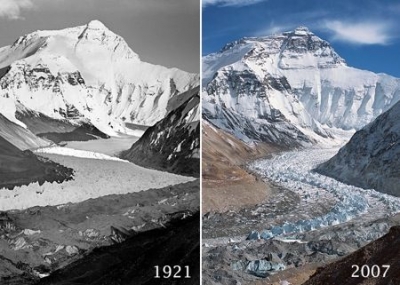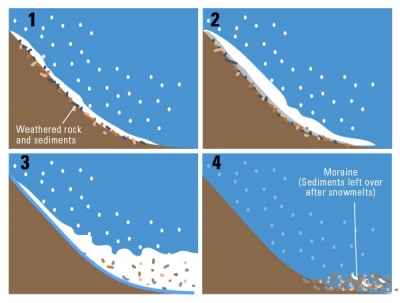
|
Glaciers are a very important source of fresh water. Melting glacier ice keeps many of Earth’s rivers flowing. Glaciers create fertile valleys for farming and their deposits are also rich in resources. |
Glaciers are keystones of Life on Earth. As giant freshwater reservoirs, they support the planet’s life systems and influence our day-to-day lives, even for communities who live far away from them. However, glaciers are disappearing.
The disappearance of glaciers makes visible the invisible. It makes tangible the current climate change that can be hard to perceive in other ecosystems. The recent evolution of glaciers found in World Heritage sites paints a true picture of their decline in a warming planet.
A study led by Jean-Baptiste Bosson in 2019 shows that most World Heritage glaciers have lost a significant portion of their mass since 1900; some even completely disappeared, as in Africa or the Alps. The study predicts that glaciers could disappear from almost half of World Heritage sites by 2100 if business-as-usual emissions continue.
Credit: International Union for Conservation of Nature
Picture Credit : Google





